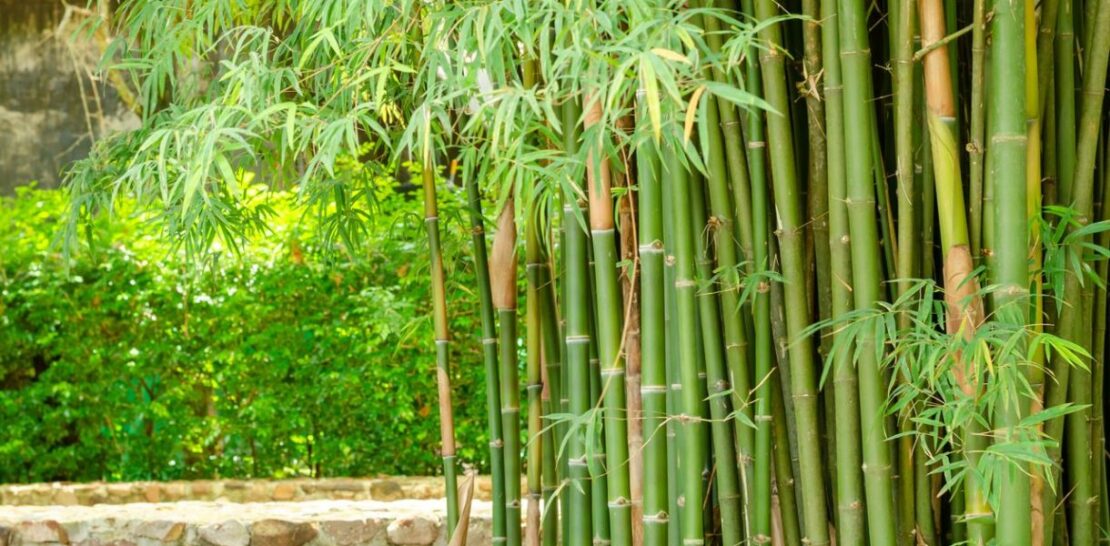Are you tired of constantly battling with invasive bamboo that threatens to overtake your beautifully landscaped garden?
Fear not, for we have meticulously researched, analyzed, and compiled a comprehensive guide to help you reclaim your outdoor space and prevent the relentless spread of this hardy plant.
Read on to discover foolproof techniques that will help you maintain a spotless garden, free from the clutches of invasive bamboo.
Understanding Invasive Bamboo: Types, Characteristics, and Why They Spread
In order to effectively combat invasive bamboo, it is crucial to first understand the characteristics of this persistent plant. By identifying the specific type of bamboo in your garden and learning about its growth habits, you will be better equipped to implement the most appropriate and effective removal methods.
Bamboo species can be broadly classified into two categories: clumping bamboo and running bamboo. While clumping bamboo grows in tight clusters and is considered non-invasive, running bamboo is the primary culprit when it comes to invasive growth. Running bamboo species, such as Phyllostachys and Pleioblastus, are characterized by their aggressive growth habits, sending out long underground rhizomes that can infiltrate large areas in a relatively short period of time.
The reason for the rapid spread of invasive bamboo lies in its rhizome system. Rhizomes are horizontal underground stems that enable the bamboo to propagate quickly and efficiently. As the rhizomes spread, they form a dense network of roots and shoots, which allows the bamboo to cover vast areas and outcompete other plants for resources.
Preventative Measures: Stopping the Spread Before It Begins
As the old adage goes, an ounce of prevention is worth a pound of cure. This is certainly true when it comes to dealing with invasive bamboo. By taking a few simple yet effective steps to prevent the spread of bamboo in your garden, you can save yourself a great deal of time, effort, and frustration in the long run.
- Choose the right species: If you’re planning to plant bamboo in your garden, opt for a clumping species rather than a running one. This will greatly reduce the risk of uncontrolled growth and make it much easier to manage the plant.
- Install a barrier: For those who have already planted running bamboo or are unable to replace it with a clumping species, installing a physical barrier around the bamboo can help prevent its spread. This can be done using materials such as high-density polyethylene (HDPE) or concrete, which should be buried at least 2 feet deep and extend a few inches above the soil surface to effectively contain the rhizomes.
- Regular monitoring and maintenance: Keep a close eye on your bamboo and be vigilant in identifying and removing any rogue shoots or rhizomes that appear beyond the desired growth area. By taking prompt action, you can prevent the bamboo from establishing a foothold in new areas of your garden.
Digging Deep: Physical Removal Techniques
Once invasive bamboo has taken hold in your garden, physical removal is often the most effective method for reclaiming your space. This can be a labor-intensive process, but with the right tools, techniques, and determination, you can successfully eradicate the unwanted bamboo and restore your garden to its former glory.
- Manual removal: For smaller infestations of invasive bamboo, manual removal may be the most practical option. This involves digging around the base of the bamboo stalks to expose the rhizomes, cutting them away from the main plant, and removing the entire root system. It is important to be thorough and meticulous in this process, as any remaining rhizome fragments can potentially regenerate and cause a resurgence of growth.
- Mechanical removal: If the bamboo infestation is more extensive, you may need to enlist the help of machinery to effectively remove the rhizomes. This can include the use of a mini excavator or a tractor-mounted tiller, depending on the size of the area and the depth of the rhizomes. Again, it is crucial to ensure that all rhizome fragments are removed to avoid future regrowth.
Chemical Control: Utilizing Herbicides for Bamboo Eradication
While manual and mechanical removal methods can be highly effective, they maynot always be feasible for all situations. In cases where the infestation is too extensive, or the area is difficult to access, chemical control using herbicides may be the most practical option. This method should be used with caution, as it has the potential to harm non-target plants and negatively impact the surrounding environment. However, when used correctly and responsibly, herbicides can provide a powerful weapon in the battle against invasive bamboo.
The most effective herbicides for controlling bamboo are those containing the active ingredient glyphosate. Glyphosate is a non-selective, systemic herbicide that works by inhibiting an essential enzyme in the plant, causing it to eventually wither and die. When using glyphosate, it is crucial to follow the manufacturer’s instructions regarding dilution rates, application methods, and safety precautions.
There are several ways to apply glyphosate to bamboo, each with its own set of advantages and challenges:
- Foliar application: This involves spraying the glyphosate solution directly onto the leaves of the bamboo. While this method is relatively easy to carry out and can be effective in certain cases, it may not be the best option for larger or more mature bamboo plants, as the herbicide may not penetrate deeply enough into the root system to achieve complete control.
- Stem injection: This method involves injecting the glyphosate solution directly into the bamboo stems, which allows for more targeted application and reduces the risk of harm to non-target plants. However, this method can be labor-intensive and time-consuming, particularly for larger infestations.
- Cut-stump application: This technique involves cutting the bamboo stalks close to the ground and immediately applying the glyphosate solution to the freshly cut surfaces. This method can be highly effective, as it delivers the herbicide directly to the plant’s vascular system, allowing it to be rapidly absorbed and transported throughout the plant. However, it may not be suitable for all situations, as it requires the bamboo to be cut down and can be labor-intensive.
Regardless of the application method chosen, it is important to be patient and persistent when using herbicides to control invasive bamboo. It may take several weeks or even months for the bamboo to show signs of decline, and multiple applications may be necessary to achieve complete eradication. Additionally, it is crucial to monitor the treated area for any signs of regrowth and take prompt action to address any resurgence of bamboo growth.
In conclusion, the battle against invasive bamboo can be a challenging and time-consuming endeavor, but armed with the right knowledge, tools, and techniques, you can effectively reclaim your garden and enjoy a pristine outdoor space once more. By understanding the characteristics of invasive bamboo species, taking preventative measures to limit their spread, and utilizing a combination of physical and chemical control methods, you can successfully eradicate these persistent plants and restore the beauty and harmony of your garden environment.




